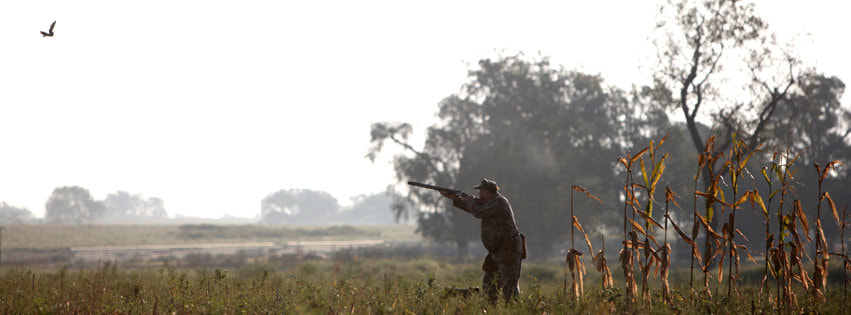By KELLY BOSTIAN For the CCOF Oklahoma Gov. Kevin Stitt’s decision not to renew hunting and fishing compacts with the Cherokee and Choctaw Nations for 2022 could mean a potential loss of millions of dollars in future federal funding for the state’s wildlife department. The Cherokee Nation claims federal funding has been boosted by $32 million and $6 million, respectively, over the life of the two compacts. The more hunting and fishing licenses the state issues, the better it is positioned among other states to take a larger piece of an annual federal funding pie. With fewer licenses being purchased by tribal members, due to the lack of compacts, the funding picture could weaken for the Oklahoma Department of Wildlife Conservation. While the Nation points to U.S. Fish and Wildlife Service estimates, the state Wildlife Department is more cautious and states that its budget comes with contingencies for funding that have always fluctuated. “There will be a fiscal impact, what exactly that will be is very hard to say,” said Micah Holmes, assistant chief of communication and education for the state department. “Each individual who has a hunting or fishing license is ‘certified’ with the U.S. Fish and Wildlife Service as a part of our federal grant funding formula, but that funding fluctuates year-to-year.” It’s important to note that Oklahoma’s state budget, which involves state taxpayer money, will not miss a dime. The Wildlife Department, however, is a self-sustaining agency funded independently and primarily through hunting and fishing license sales and related federal funding. Those federal programs historically boost department funding by well over $20 million a year. Where the money comes from The federal Wildlife Restoration Act of 1937 and the Sportfish Restoration Act of 1950 level 10% and 11% excise taxes on nationwide firearms and ammunition, archery, and fishing tackle sales, and a 3% tax on boats and marine equipment and fuel sales. That money is then distributed annually among fish and wildlife agencies for the 50 states and five commonwealths. The U.S. Fish and Wildlife Service issues those apportionments based on a formula that includes factors like the geographical size, population, and the proportion of licenses sold in the state relative to nationwide license sales. That last requirement is where having that set pool of certified tribal compact licenses comes into play. And that is where the funding picture gets a little complicated. “It is very hard to determine a total dollar value impact of the tribal licenses. That said, there has been an increase in the number of individuals we certify since the inception of the tribal licenses, which has likely led to an increase in federal funding,” Holmes said. Cherokee Nation Secretary of Natural Resources Chad Harsha agreed there are many federal funding variables, but said he believes a bigger hit is inevitable due to the lack of compacts. Conversations with the U.S. Fish and Wildlife Service back up the tribe’s claims that the Cherokee compact will have been worth more than $32 million to the state over its six years and the Choctaw compact $6 million over its five years, he said. “Even conservatively thinking, it’s reasonable to conclude that the full impact will cause financial damage to the Wildlife Department,” he said. Compact license dollars After the compact expires on Dec. 31, tribal citizens can hunt and fish without a state-issued license on Reservation lands, which cover large portions of the state. However, they will need a state license if they want to hunt or fish elsewhere, Holmes said. Nation citizens did not pay for their individual compact licenses and they could have one whether or not they hunted or fished. It’s certain that not nearly as many tribal citizens will purchase state licenses in the future, Harsha said. Holmes noted that, on average, Choctaw tribal members purchased $282,237 in licenses pre-compact. Choctaw compact license revenue, including a $200,000 flat contribution, averaged $33,390 a year. Cherokee citizens purchased $518,811 worth of licenses, on average, pre-compact, and the Nation paid $425,835 under the contract. He said it is important to note U.S. Fish and Wildlife historical numbers actually run two years behind, so the historical funding formula noted for 2021 actually reflects numbers and revenue generated in 2019.
How the numbers line up Indeed, compact licenses show up in the USFWS Historical License Data Index two years after the compacts were signed. The state 2010 through 2017 collected apportionments based on an average of roughly 420,000 hunting licenses and 690,000 fishing licenses. But in 2018 the total number of Oklahoma hunting licenses jumped by 98,574, to 529,651 total, and fishing licenses climbed by 94,462, to 794,368 total. Using the federal apportionment for 2021as an example, Harsha credited each hunting license sold for contributing $33.08 of the total $16.96 million in Wildlife Restoration funding. Likewise, each fishing license accounted for $12.13 of the $8.6 million in Sportfish Restoration dollars. That comes to $45.21 in federal funding generated by each state license issued, he said. So, he reasoned, the 121,000 Cherokee Nation compact licenses issued in 2021 netted more than $5.47 million for the Wildlife Department. Include the $242,000 paid upfront at $2 apiece for the licenses and the total is over $5.6 million, just for Cherokee compact. That represents nearly 18 percent of the total $25.56 million in federal apportionments to Oklahoma in 2021. With the Wildlife Department yet to see compact dollars from 2020 and 2021, and increased license sales and outdoors participation due to COVID-19, as well as a spike in firearms and ammunition sales, boosted nationwide by the pandemic and Democrats winning the White House control of Congress, that impact likely will climb for the residual two years of compact funding, Harsha said. Kelly Bostian is an independent journalist writing for The Conservation Coalition of Oklahoma Foundation, a 501c3 non-profit dedicated to education and outreach on conservation issues facing Oklahomans. To learn more about what we do and to support Kelly’s work, see the About the CCOF page.
0 Comments
Leave a Reply. |
Archives
May 2024
Categories
All
|
Conservation Coalition of Oklahoma
P.O. Box 2751
Oklahoma City, OK 73101
[email protected]




